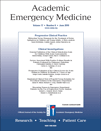10 Minute ENT Consult
10 Minute ENT Consult By . San Diego, CA : Plural Publishing, Inc. , 2009 ; 521 pp (with an additional 47-p index); $79.95 (softcover ).
The 10 Minute ENT Consult was written to be a guide for primary care and emergency physicians, residents, and medical students to diagnose and treat conditions affecting the ears, nose, and throat. The work is the combined effort of 27 contributing authors largely from California, with Dr. Djalilian editing and organizing the information. Dr. Djalilian has succeeded in creating a unique organizational approach to this book. The focus of each section and chapter is on a presenting symptom rather than a disease process. This does result in some information repetition, which would not be objectionable and probably not even noticed (unless one is sitting down and reading the entire book in order to write a review), as the information is relevant in each of the chapters.
The book is divided up into three parts. “Part I: Diseases of the Ear, Dizziness, and Facial Paralysis,” comprises the first 177 pages of the book and includes topics such as history and exam of the ear, ear pain, ear drainage, hearing loss, tinnitus, ear plugging, trauma, facial nerve paralysis, and dizziness and vertigo. The history chapter was a little more detailed than I normally perform in the emergency department (ED), but the reminders about audiology referral and hearing loss testing were nice refreshers. There is also a fabulous photo of normal ear anatomy on page 9 that reminded me of what I am trying to see on my tympanic membrane exams.
The chapters are easy to read and nicely divided into signs and symptoms, diagnosis and tests, and treatment and referral. Both the ear pain and the ear drainage chapters covered otitis externa—a nice review since we see and treat this frequently. The discussion on cerumen impaction made some suggestions of treatment options that I do not normally consider. The trauma chapter also has an excellent picture of an auricular hematoma pre- and postdrainage, which was a helpful reminder of this less commonly seen finding. The foreign body section I did not find as helpful for the ED, as we tend to be proficient in removing the majority of them in the ED; no new “tricks” were mentioned for this challenge, I was disappointed to note.
My favorite chapter in this book was on dizziness and vertigo. Trust me, I did not expect this when I began the review, as this is generally not my favorite patient complaint to see on the triage screen. The discussion on the Dix-Hallpike test and the Epley maneuver offer noninvasive treatment modalities to try for vertigo. The corresponding pictures and clear explanation offer a detailed description of how to perform these maneuvers. Many of the early chapters also offer summary flow charts for the symptoms, which are easy to read and help organize the material.
The second section is titled “Diseases of the Nose and Sinuses.” This is approximately 100 pages and included chapters on history and examination of the region, nasal obstruction, epistaxis, nasal discharge, and trauma. The nasal obstruction chapter offers a nice synopsis of the diagnosis of rhinitis medicamentosa that results from prolonged use of a sympathomimetic spray. The treatment described involves gradually tapering the sprays and using a steroid spray for 1 month. I am certain there are some ED patients who have chronic allergic sinusitis who may also have had a component of this, so it is a good reminder to include over-the-counter nasal sprays in the history taking in those patients. The epistaxis and trauma sections are very basic for emergency physicians, who are likely to be very comfortable treating these patients due to the frequency with which they present to most EDs.
The final section is titled “Diseases of the Mouth, Throat, and Neck.” This is approximately 250 pages long and includes appropriate historical questions and exam details, oral cavity lesions, sore throat, hoarseness, swallowing problems, airway obstruction, tumors, chronic cough, neck pain, procedures, and danger signs in otolaryngology. The history chapter is a nice review of in-depth patient information, but asking all these questions to emergency patients is not always practical on a busy shift. The oral cavity lesions and swallowing difficulties chapters probably have more relevance in the primary care office setting. The sore throat chapter wrestles with the question of antibiotic usage and provides concrete treatment regimes. It is a chapter I would refer to or reference for my patients regarding treatment selection. The salivary gland, thyroid, and parathyroid chapter was a succinct review of disorders we do not always diagnose in the ED and is a must-read review chapter for emergency physicians. The procedure chapter is interesting—although most would not be done in the acute care setting, I now have a better understanding of what occurs to a patient during a specific procedure done by an otolaryngologist.
In summary, the book is small, portable, and highly readable. Although in line with other handbook prices, the $79.95 seems a bit steep. The format of symptom-related organization is successful and makes the information more palatable. It is an excellent summary, especially for primary care physicians. I think that it provides a nice framework for students and residents for use during an ENT rotation or as a subspecialty overview. I will use this book when I need a quick review of ENT, and it will be useful as a reference in the ED.




